Scottish Wildcats: Six things you should know about the 'Highland Tiger' and how it's fighting for survival in 21st century Britain
Once widespread across the British Isles, there are now fewer than 100 pure Scottish wildcats left. Joe Gibbs considers whether curiosity or interbreeding killed the ‘Highland tiger’.
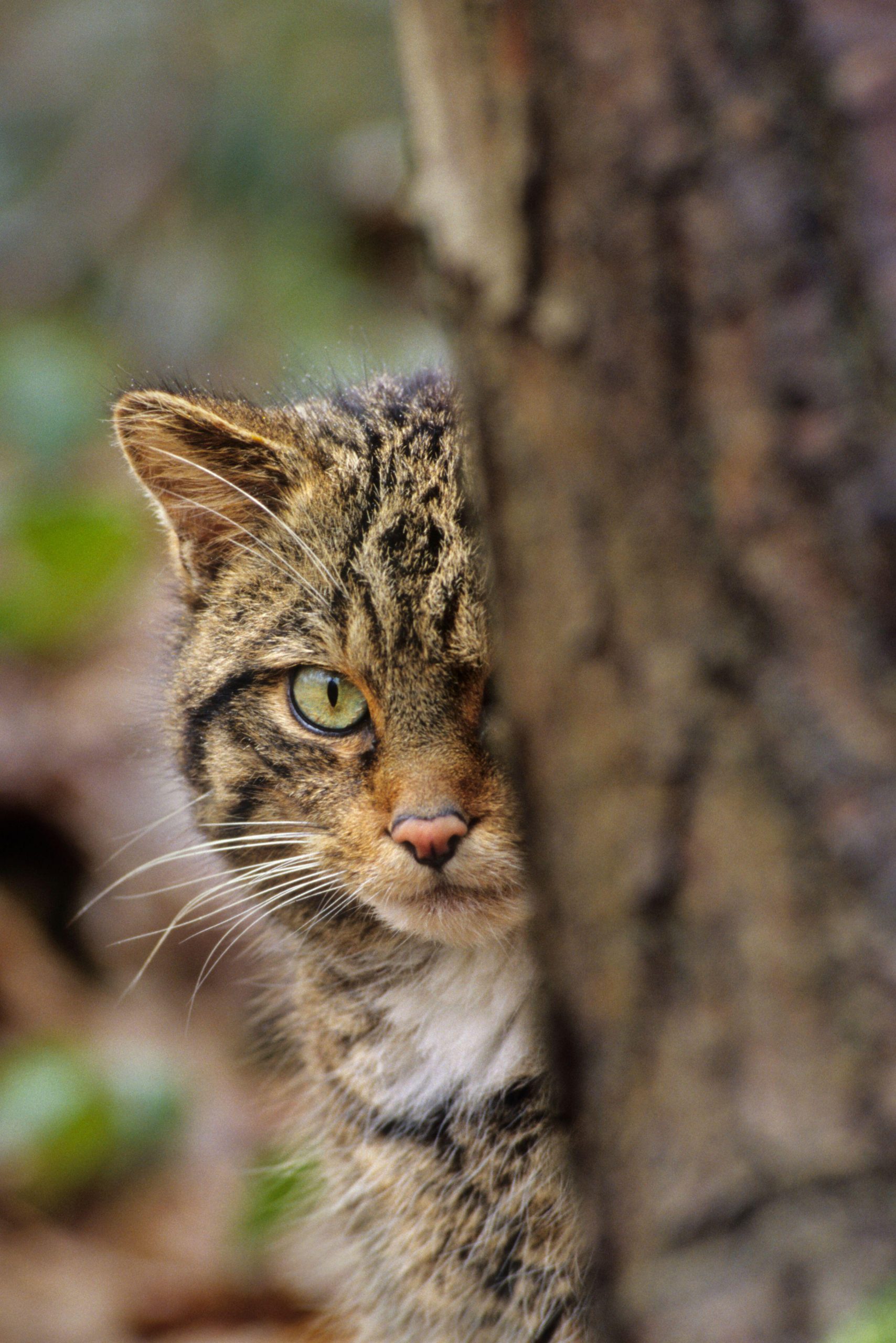
‘Touch not the cat bott a glove,’ warns the motto of the confederation of smaller Highland clans that make up Clan Chattan. The moggie referred to is a wildcat and the advice, in plain English, is not to mess with one when its claws are out. The question today, however, isn’t so much what to do when in a tight corner with Felis sylvestris sylvestris — or Felis sylvestris grampia, if you prefer — the Scottish version of the European wildcat, but where to find one in the first place.
There are just a tiny number left
There are estimated to be fewer than 100 specimens of Scotland’s apex predator left in the wild, concentrated in the northern and north-eastern Highlands, in Morven and the Ardnamurchan peninsula in the western Highlands. Of these, none may be pure wildcat, most carrying at least 25% domestic cat genes. Another few thousand more diluted hybrids and feral cats also exist outdoors.
Wildcats once roamed the whole of Britain
A hunter along the forest and moorland edge at the fringes of daylight, the wildcat needs extensive tracts of woodland or wild country to flourish. Once widespread over the whole of Britain, by the end of the 18th century, as agriculture tamed the land, wildcats were to be found only in the mountain fastness of the north.

Yet the Highlands were to prove an unreliable sanctuary. In 1878, the naturalist and sportsman Charles St John observed that ‘the true wildcat is gradually becoming extirpated owing to the increasing preservation of game’ and, by 1914, it had almost disappeared.
The rallying of Highland keepers and stalkers to the colours in the First World War allowed the species, in the words of the naturalist Frank Fraser Darling, to make ‘a wonderful recovery’. In 1947, he recorded wildcats as being ‘numerous and widespread in the mainland Highlands.
Persecution is now unlikely to overtake the rate of increase’, a prediction that turned out to be somewhat premature. Subsequently, loss of habitat and prey, hybridisation and culling to protect game led to wildcats gaining protected status in 1981. Now, faced again with extinction, efforts are under way to breed captive cats for release under the auspices of the Saving Wildcats campaign, headed up by the Royal Zoological Society of Scotland (RZSS).
Wildcats are bigger and broader than domestic cats
Compared with a domestic cat, the ‘Highland tiger’ is larger, has longer legs, a broader, blunter head and a distinctive tail with three to five black rings and a black, rounded end. Fond of dining on hares, rabbits, squirrels, rats, voles and mice, it also preys on grouse and other birds, fish and frogs. A rabbit skin turned inside out and left with the feet attached is a tell-tale sign of a wildcat kill, although rabbits, once a convenience food, have become scarce due to disease, contributing to the decline of this feline species.
Exquisite houses, the beauty of Nature, and how to get the most from your life, straight to your inbox.
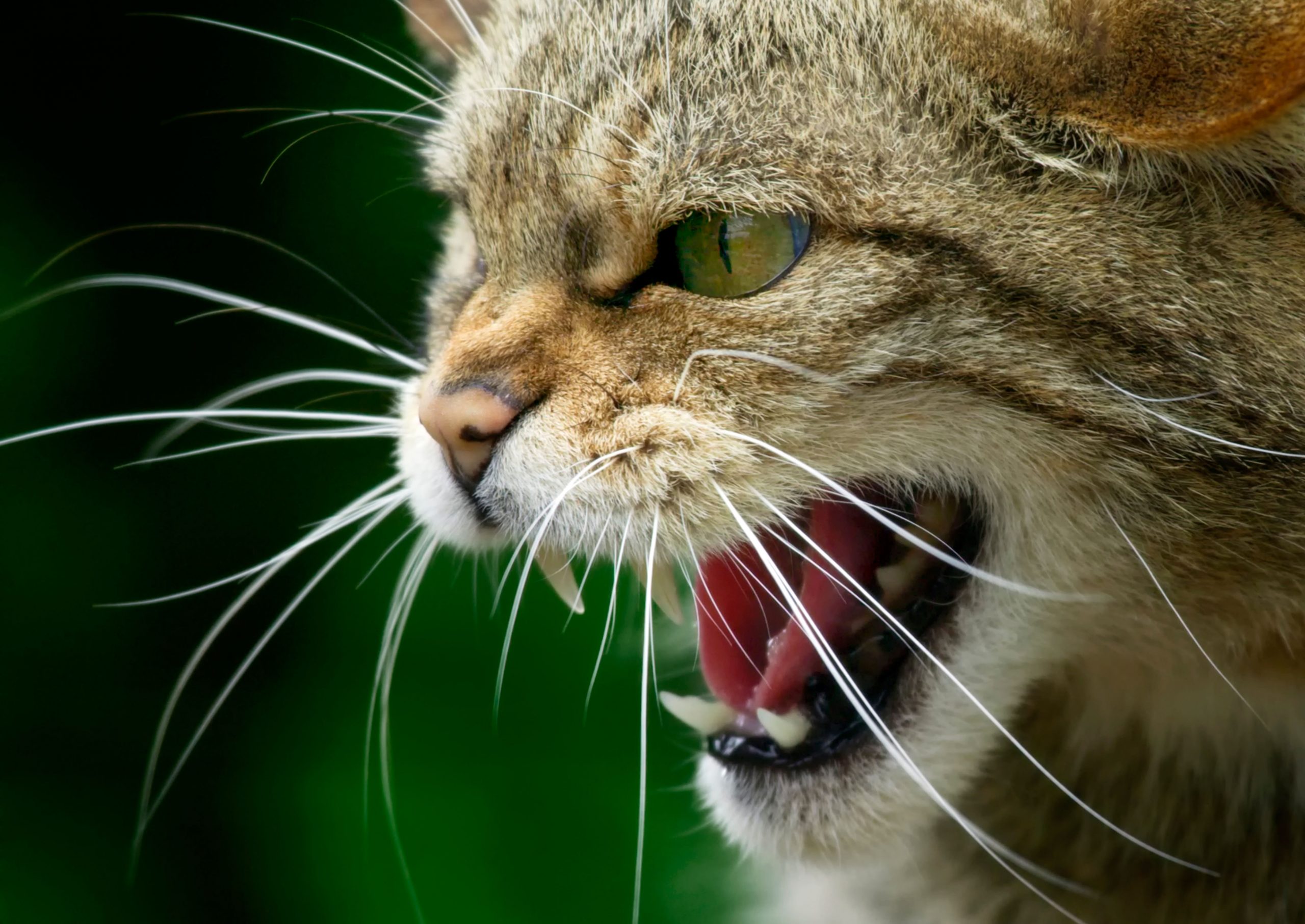
Unlike the fox, it seldom eats carrion — its sharp, relatively small teeth aren’t adapted to tearing through deer hair or sheep’s wool to get to the flesh underneath, although the Great Glen naturalist and stalker Lea MacNally found evidence of a wildcat skinning sheep’s heads and eating the peelings. Elder animals tend to become clever hen thieves. In winter, they den up in rocky cairns and old badger setts.
Wildcats can't be tamed
Although naturally shy of humans, many accounts attest to the strength and ferocity of the cornered wildcat when, spitting and hissing, it turns to face its pursuer. St John described killing one he had pursued with a stick as it sprang straight at his face over the heads of his three Skye terriers: ‘I never saw an animal fight so desperately… if a tame cat has nine lives, a wildcat must have a dozen.’
In A Hundred Years in the Highlands, Osgood Mackenzie told of an exciseman searching for an illicit still he had heard was hidden in the Castle Leod Raven Rock, above Strathpeffer. He poked his stick into the hole and found instead a wildcat’s nest and her kittens.
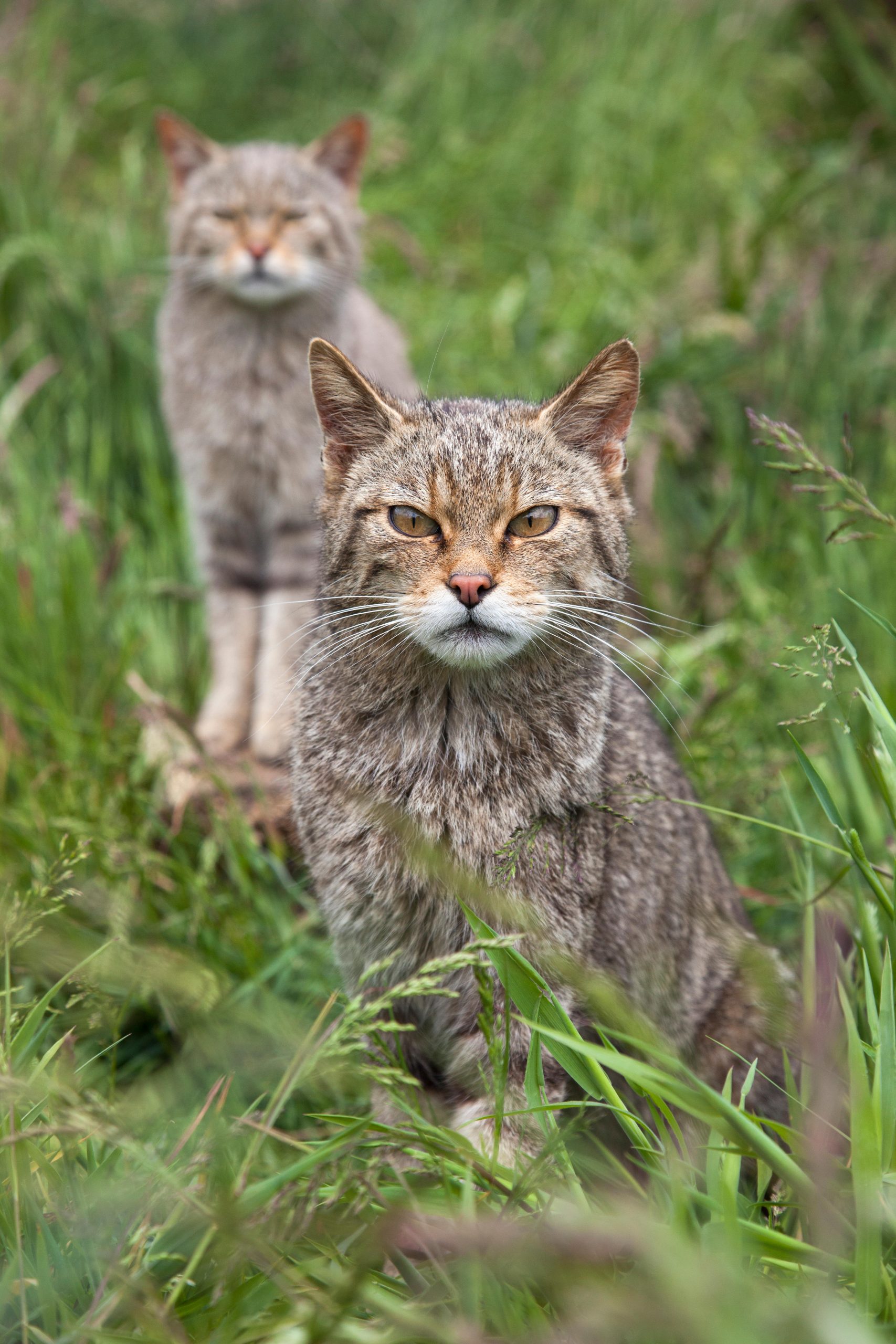
She flew at him, causing him to miss his footing and fall to the bottom of the rock, breaking his leg. Had not some tourists visited two days later, he would have died where he fell, doubtless little mourned in the locality.
Taming a mature wildcat is almost impossible. Mackenzie recalled catching a monster near the Fionn Loch, measuring 43in in length (the average is 37in): ‘How I lamented he could not be tamed, as he would have looked so handsome on a rug, lying warming himself before a drawing-room fire.’ Nonetheless, writer Duff Hart-Davis has contended that kittens reared on the bottle ‘can tolerate the proximity of humans fairly well’ — but the wildcat keepers at the RZSS’s Highland Wildlife Park near Aviemore have endless tales of wildcats who've bitten, scratched and spat at the hands that feed them, even when reared from kittens.
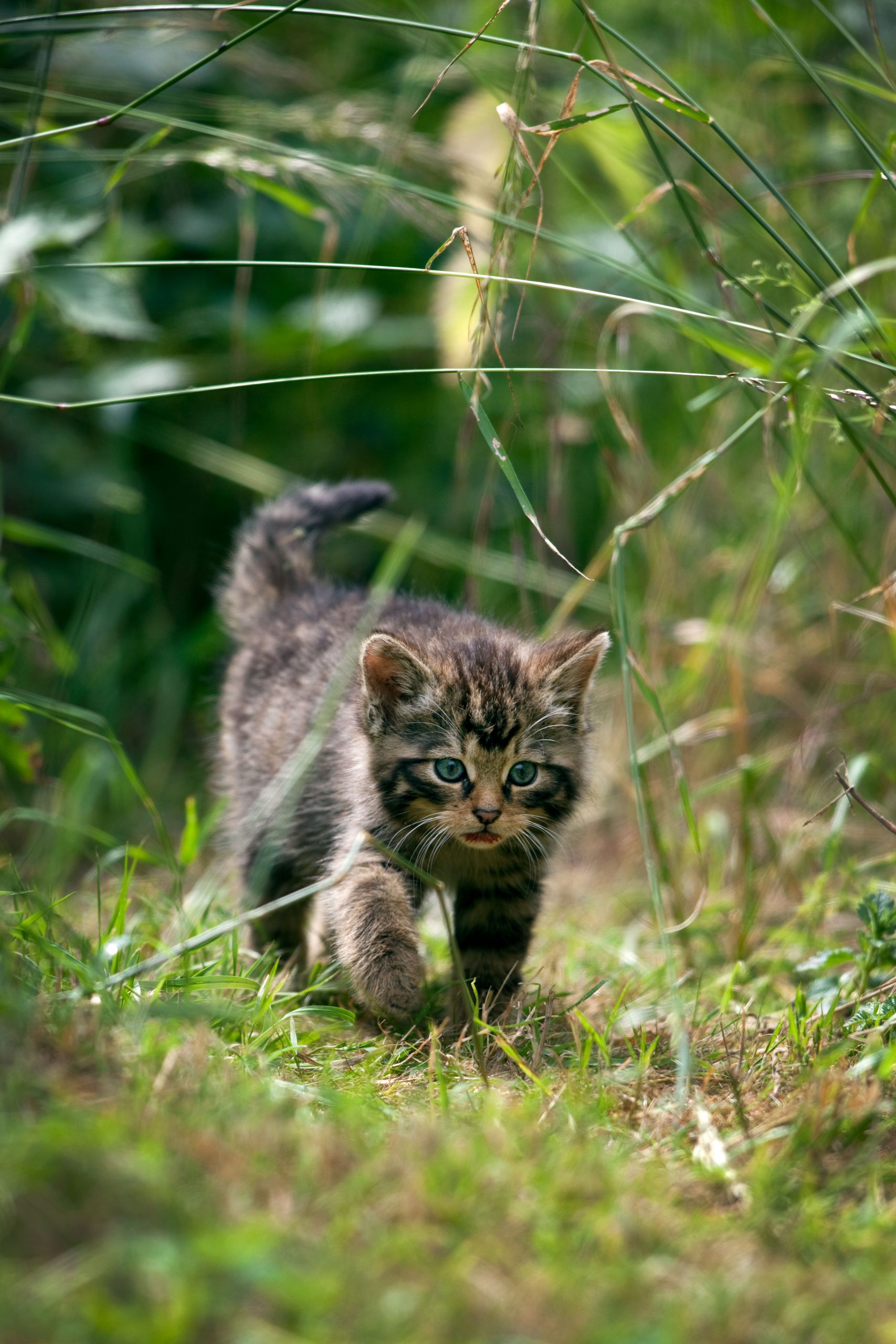
There are many myths and legends about Scottish wildcats
‘I do not know a more harsh and unpleasant cry than that of the wildcat, or one more likely to be the origin of superstitious fears in the mind of an ignorant Highlander,’ said the distinctly patronising Charles St John. That said, Highland myths and legends concerning wildcats abound. Their ferocity led Highlanders to suppose wildcats had a claw in the tip of their tail, and it was believed that tom wildcats that mated with domestic cats would return later to kill the litter.
Some of the beliefs are even darker. Wildcats probably inspired the tales of the cat sith, the fairy cat of Scottish Gaelic tradition; it was as large as a dog, had a white spot on its chest and was held to be a witch in disguise. There was even a nasty Celtic ritual called Taghairm which involved roasting a live cat on a spit above a fire until the Devil appeared.
Efforts to help wildcats thrive again are under way
What of the future of the Highland wildcat? David Barclay, former situ conservation manager for Saving Wildcats, at the RZSS’s Highland Wildlife Park, fears the population of sufficiently pure wildcats is too small to be viable. With partners in the Highlands such as Aigas Field Centre, Alladale Wilderness Reserve and others, RZSS has overseen a successful breeding programme from the purest native stock available, which has produced 150 kittens. Some will be interbred with pure strains of the same species from Europe and a scheme of releasing year-old adults into the wild begins in 2022.
Before that, the animals need help to develop life skills — how to find dens, evade other species and kill prey. RZSS recently received permission to construct large enclosures at Highland Wildlife Park, within which its cats can receive this education, and Saving Wildcats is identifying the best areas for release.
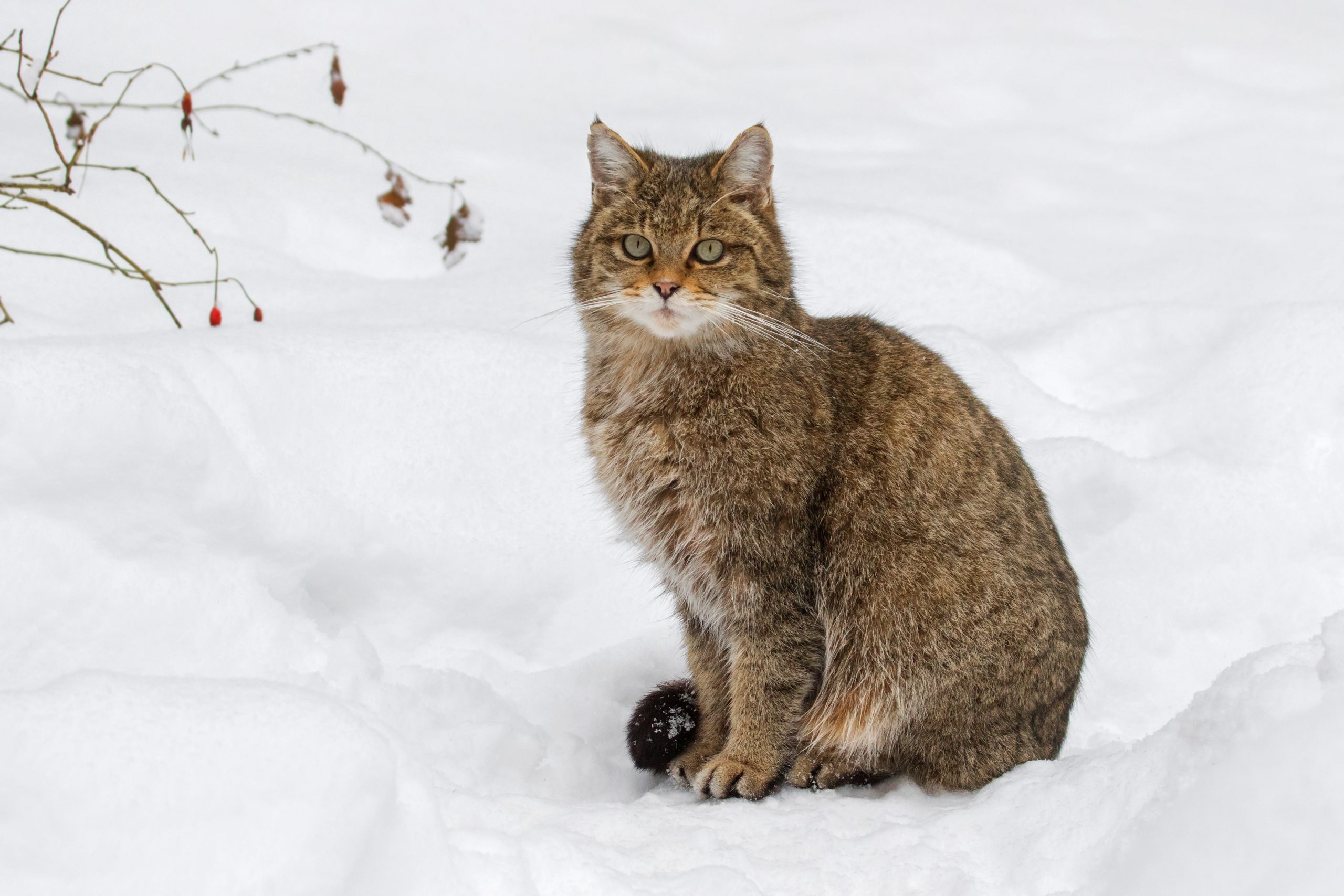
In these, conservationists will need to run a programme of neutering and vaccinating hybrid and feral cats and persuading domestic-cat owners to do the same, in addition to microchipping their pets. ‘It is as much about the people as it is about the cats,’ says Mr Barclay. ‘We want cat owners to be supporters of wildcat conservation.’
A likely release site will be within the Cairngorms National Park, where a group of four neighbouring landowners — the RSPB, two government agencies and one private landowner — have brought 230 square miles of land into a rewilding partnership.
Thomas MacDonell, rewilding manager of Wildland Estates, the private partner, says it would happily provide a test site. Perhaps, after hundreds of years of being squeezed out of existence, things look cool for cats.
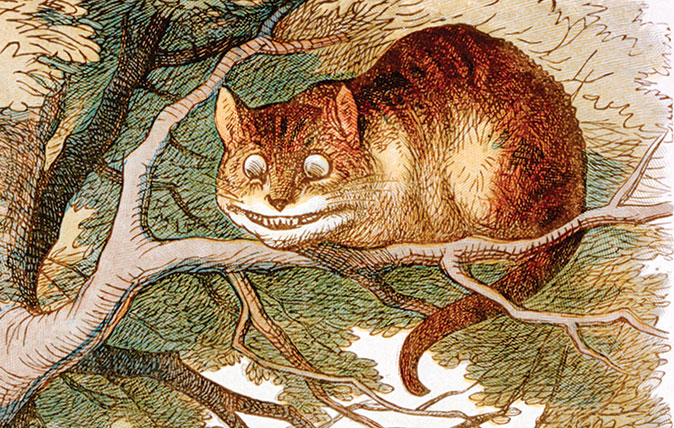
The nine greatest cats in literature, from Macavity to the Cat Who Walked By Himself
Macavity, Macavity, there’s no one like Macavity – apart from the other eight on this list, as picked out by Emma

Credit: Alamy
In praise of cats, our 'lithe, scrupulously clean and interesting companions'
Most people identify either as a dog person or a cat person, and Country Life's default focus is usually canine.
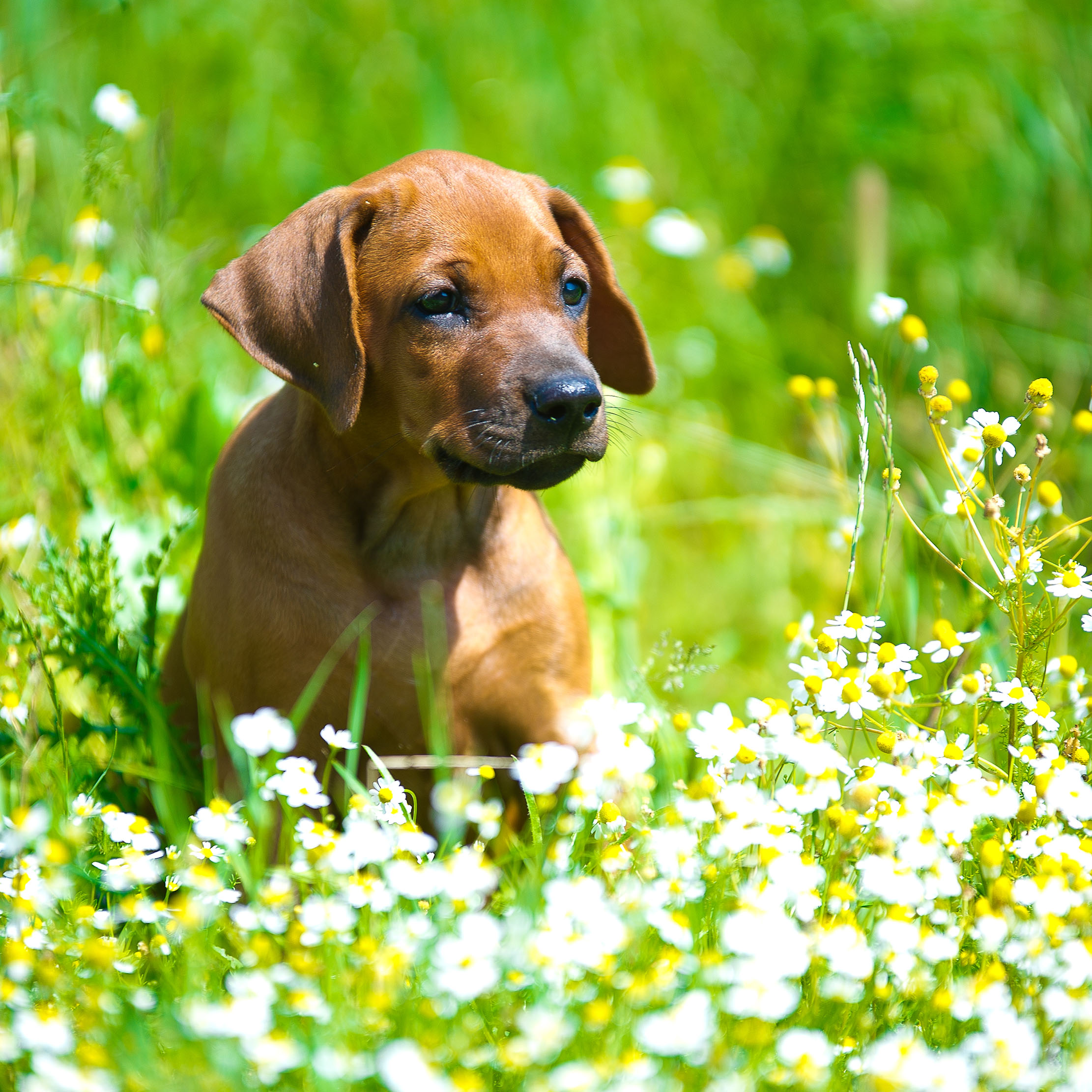
Credit: Getty Images/iStockphoto
The common garden plants that are deadly to dogs and cats – and what to do if they eat one
Many beautiful and common plants in the average English garden can prove fatal to household pets. Peter Green, a veterinary